9 Best Winter Flowers for New York
BY ABDUL WADOOD | JUNE 5TH, 2023 | LAWN CARE, NEW YORKIn most Northern states, we’ve resigned ourselves to a brown, lifeless landscape during those cold-weather months. But what if you could keep splashes of color and life in your yard during the dreariest months? It’s possible with these nine great winter flowers, which will dress up your Empire State yard when you need it most.
In this article:
Best Winter Flowers for New York
Herbs
1. Winter Aconite (Eranthis Hyemalis)
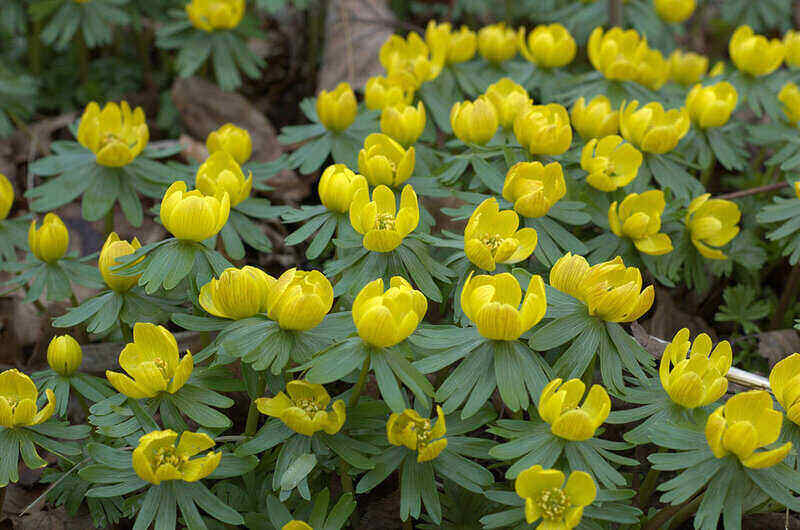
Photo Credit: Martin Olsson (mnemo on en/sv wikipedia and commons, martin@minimum.se). / Wikimedia Commons / CC BY-SA 3.0
Winter aconite has bright green leaves surrounding cup-shaped, bright yellow flowers from late winter to early spring. It goes dormant in late spring and throughout the summer.
Winter aconite is a low-maintenance plant that thrives in moist soil with good drainage. It requires at least six hours of direct sunlight a day for the best growth. But unlike many flowering plants, it doesn’t do well in high temperatures, making it ideal for winter gardens.
Growth habit: Herb
Mature size: Up to six inches tall and just as wide
Duration: Perennial
Foliage: Dark green
Sunlight needs: Full sun to partial shade
Soil preferences: Sandy, loam, clay, moist, well-drained soil
Water needs: Moderate
Potential hazards: Toxic to humans and pets
2. Snowdrop (Galanthus Nivalis)
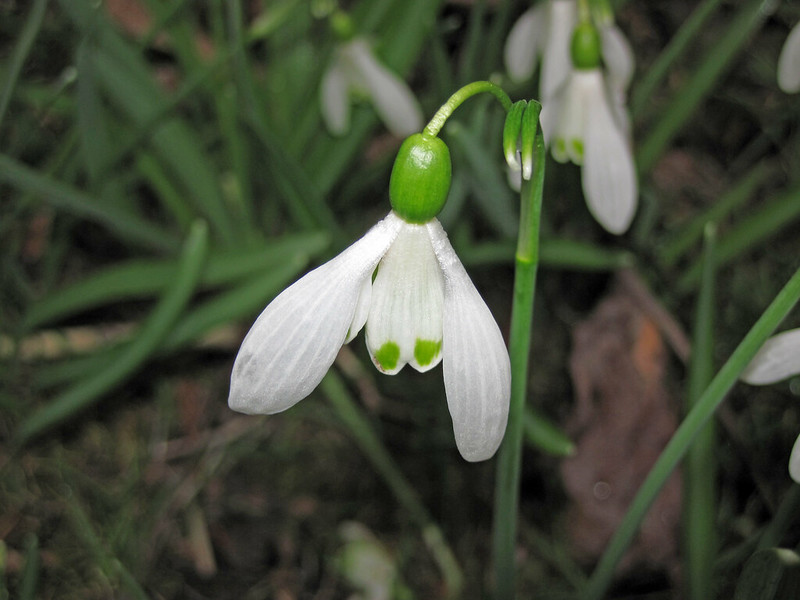
Photo Credit: James St. John / Flickr / CC BY 2.0
Snowdrop features two erect, narrow, green leaves and bell-shaped, white flowers atop the stem. It blooms from mid-winter to early spring and depends on bees for pollination.
Snowdrop grows best in full sun and can withstand partial shade. It’s a low-maintenance plant that requires moderate watering. Snowdrop prefers moist soil with good drainage and can resist critters.
Growth habit: Herb
Mature size: Up to 12 inches tall and six inches wide
Duration: Perennial
Foliage: Green
Sunlight needs: Full sun to partial shade
Soil preferences: Loam, clay, moist, well-drained soil
Water needs: Moderate
Potential hazards: Toxic to humans and pets
3. Wild Columbine (Aquilegia Canadensis)
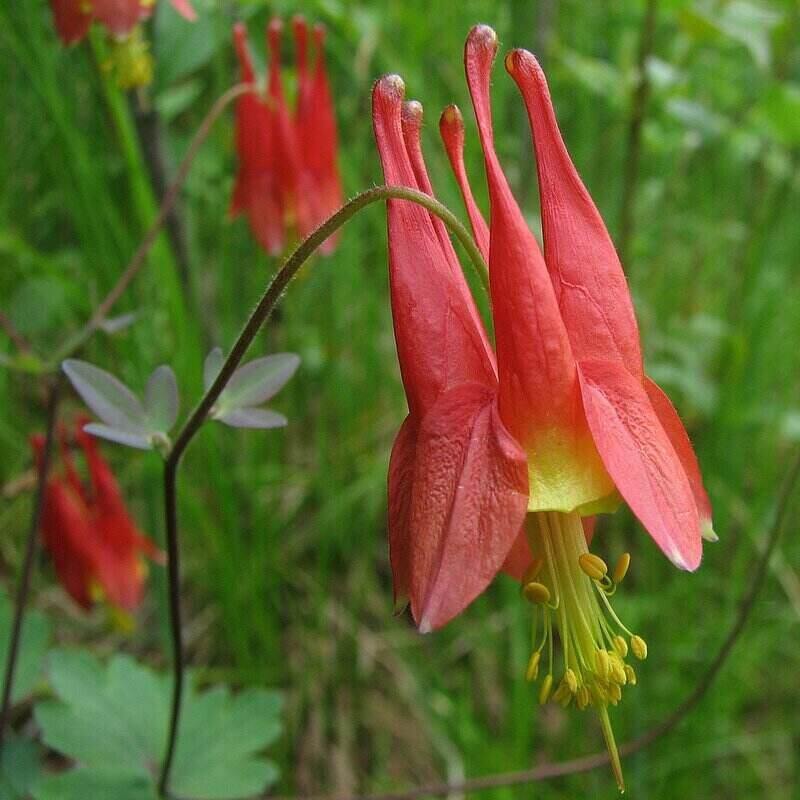
Photo Credit: Ragesoss / Wikimedia Commons / CC BY-SA 3.0
Wild Columbine is a short-lived perennial that blooms from late winter to mid-summer, producing reddish-yellow, bell-shaped flowers that hawk moths and hummingbirds love. Wild Columbine is native to New York and is well-adapted to the region’s climate and soil conditions.
This plant grows best in partial shade and prefers moist soil with good drainage. It’s also quite hardy. In addition to thriving in cold temperatures, it survives with moderate watering and resists insects and diseases.
Growth habit: Herb
Mature size: Up to 3 feet tall and 2 feet wide
Duration: Perennial
Foliage: Green
Sunlight needs: Partial shade
Soil preferences: Moist, well-drained soil
Water needs: Moderate
Potential hazards: Toxic to humans and pets
Shrubs
4. American Pussy Willow (Salix Discolor)
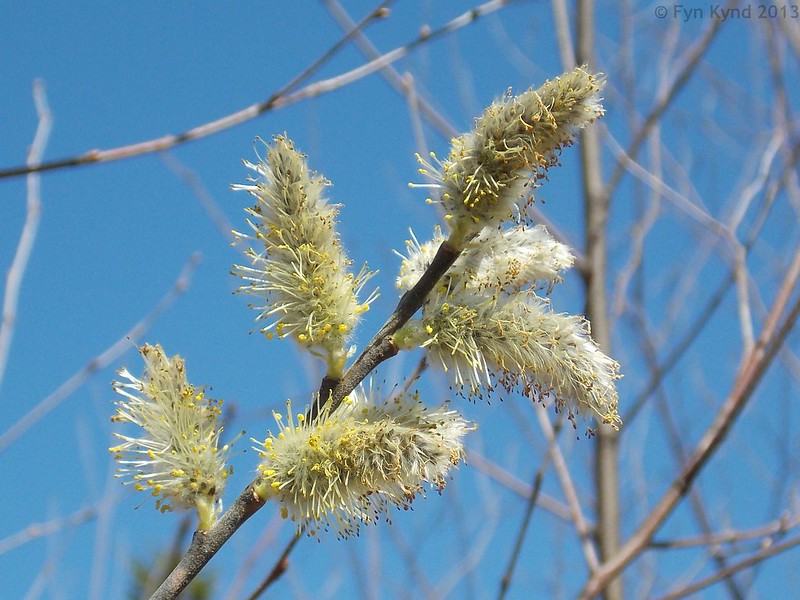
Photo Credit: Fyn Kynd / Flickr / CC BY 2.0
American pussy willow features multiple trunks with bright green leaves and can grow up to 20 feet tall. The flower buds burst and expose their soft silky hair from late winter to late spring. The flowers aren’t showy, nor do they have fragrance.
American pussy willow loves full sun and prefers nutrient-rich, moist soil with good drainage. It’s susceptible to attack from caterpillars, aphids, and sawflies. American pussy willow is native to New York and doesn’t require synthetic fertilizer.
Growth habit: Shrub
Mature size: Up to 20 feet tall and 15 feet wide
Duration: Perennial
Foliage: Bright green
Sunlight needs: Full sun
Soil preferences: Rich, moist, well-drained soil
Water needs: High
Potential hazards: Non-toxic
5. Boxwood (Buxus Sempervirens)
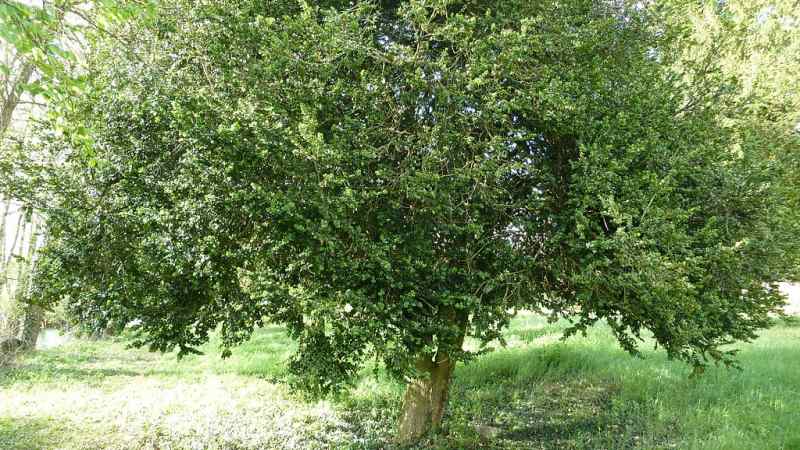
Photo Credit: Prosopee / Wikimedia Commons / CC BY-SA 3.0
Boxwood is a low-maintenance evergreen shrub featuring attractive dark green foliage. The leaves are especially appealing when there’s some snow on them. The plant blooms from late winter to early spring, producing small, non-showy, yellowish-green flowers.
Boxwood requires at least six hours of direct sunlight a day for the best growth. It can withstand partial shade, but the growth speed will reduce. Boxwood doesn’t require frequent watering, but we recommend applying some mulch to prevent the shallow roots from getting dry.
Growth habit: Shrub
Mature size: Up to 20 feet tall and just as wide
Duration: Perennial
Foliage: Dark green
Sunlight needs: Full sun to partial shade
Soil preferences: Sandy, loam, clay, moist, well-drained soil
Water needs: Moderate
Potential hazards: Toxic to humans and pets
6. Border Forsythia (Forsythia x Intermedia)
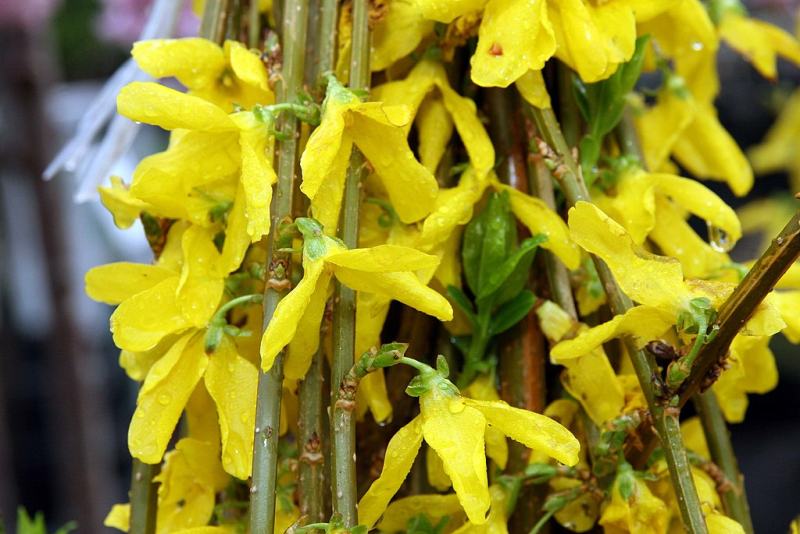
Photo Credit: Photo by David J. Stang / Wikimedia Commons / CC BY-SA 4.0
Border forsythia is not native to New York but can thrive here with little maintenance. It grows best in full sun and prefers moist, well-drained soil. Border forsythia grows fast, gaining 24 inches a year. It’s a safe plant to grow on your lawn if you have curious kids and pets because it is not known to present any harzards.
Border forsythia blooms from mid-winter to late spring, producing large, bright yellow flowers. Though this shrub is a non-native, it has good resistance to cold temperatures.
Growth habit: Shrub
Mature size: Up to 10 feet tall and 12 feet wide
Duration: Perennial
Foliage: Medium green
Sunlight needs: Full sun to partial shade
Soil preferences: Sandy, loam, clay, moist, well-drained soil
Water needs: Moderate
Potential hazards: Non-toxic
7. Fragrant Daphne (Daphne Odora)
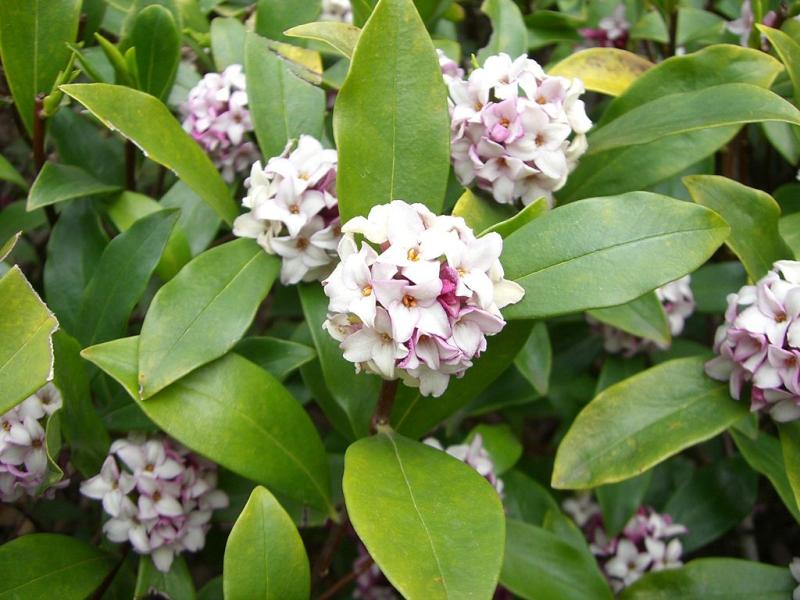
Photo Credit: Miya / Wikimedia Commons / CC BY-SA 3.0
Fragrant daphne produces highly fragrant, whitish-pink flowers from mid-to-late winter that butterflies and bees love. Its foliage looks beautiful too. Fragrant daphne grows best in full sun and can withstand partial shade. It prefers moist soil with good drainage.
All parts of fragrant daphne are toxic to humans and pets. So, it’s best to grow this shrub on the exterior or in a place that’s out of reach for your kids and pets.
Growth habit: Shrub
Mature size: Up to 7 feet tall and 4 feet wide
Duration: Perennial
Foliage: Dark green
Sunlight needs: Full sun to partial shade
Soil preferences: Moist, well-drained soil
Water needs: Moderate
Potential hazards: Toxic to humans and pets
Bulb
8. Early Crocus (Crocus Tommasinianus)
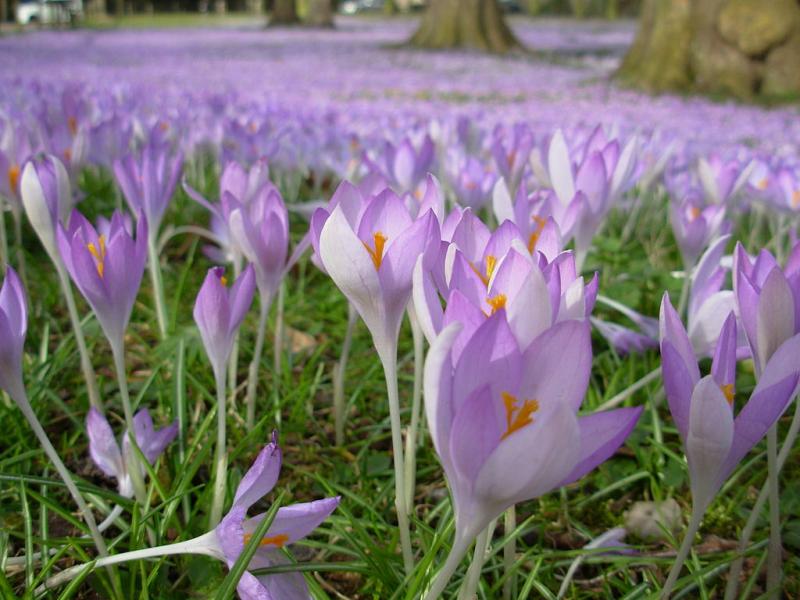
Photo Credit: Andrew Barden / Wikimedia Commons / CC BY 2.0
Early crocus is a beautiful, low-growing perennial with calyx-shaped flowers appearing during late winter to mid-spring. It requires at least 6 hours of direct sunlight a day for the best growth. Early crocus prefers soil with good drainage.
Fall is the best time to plant early crocus. It’s a low-maintenance plant with moderate watering requirements. Early crocus is toxic to humans and pets, so grow it cautiously.
Growth habit: Bulb
Mature size: Up to 0.4 feet tall and 0.2 feet wide
Duration: Perennial
Foliage: Green
Sunlight needs: Full sun to partial shade
Soil preferences: Sandy, loam, clay, well-drained soil
Water needs: Moderate
Potential hazards: Toxic to humans and pets
Tree
9. Witch Hazel (Hamamelis Virginiana)
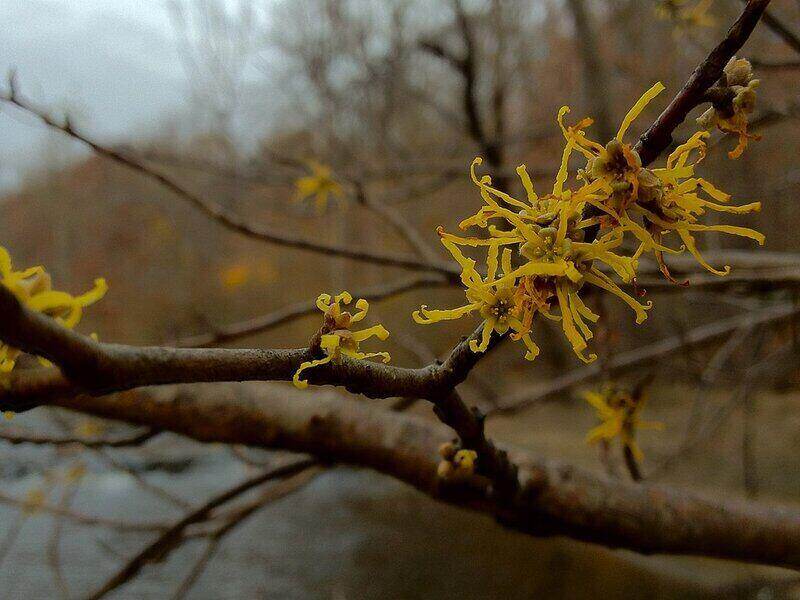
Photo Credit: Fritzflohrreynolds / Wikimedia Commons / CC BY-SA 3.0
Witch hazel is a New York native tree that blooms from early fall to late winter, producing fragrant, wispy, yellow flowers. Its foliage looks exceptional during winter, with round, yellow leaves. Witch hazel requires little to no maintenance and can resist pests and diseases.
Witch hazel requires full sun for the best growth and prefers moist soil with good drainage. It’s a small tree that can grow up to 30 feet in height and spread 20 feet.
Growth habit: Small tree
Mature size: Up to 30 feet tall and 20 feet wide
Duration: Perennial
Foliage: Green in spring, yellow in fall
Sunlight needs: Full sun to partial shade
Soil preferences: Moist, well-drained soil
Water needs: High
Potential hazards: Non-toxic to humans, toxic to pets
FAQs
Native plants are well-adapted to a region’s climate and soil conditions. Here are some advantages of native plants over non-natives.
• They are easier to maintain.
• They attract birds, butterflies, bees, and other wildlife to your garden.
• They require less water as they naturally adapt to the local environmental conditions.
• They need fewer pesticides and fertilizers.
Wild Columbine, American pussy willow, and witch hazel are native to New York.
American pussy willow and border forsythia are non-toxic.
The Final Word
The cold, snowy weather of New York doesn’t mean that your lawn should look dreary. All plants listed here bloom in winter and can add colors to your garden even when there’s snow.
If you need assistance with landscape design, lawn maintenance, or even choosing the best plants, Wikilawn New York lawn care pros are just a click away.
Main Photo Credit: Kora27 / Wikimedia Commons / CC BY-SA 4.0